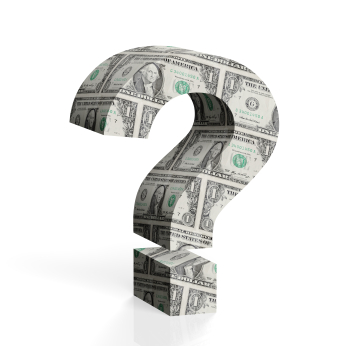Each week in the Money Talk Podcast, Landaas & Company advisors offer insights for long-term investors by discussing the ever-changing circumstances of the financial markets. Try to answer the following questions, based on some of those conversations.
1.
In the July 29 Money Talk Podcast, Dave Sandstrom explained that reading the financial tea leaves was particularly difficult because of how the pandemic has distorted economic and market indicators. Which one of the following was an example Dave mentioned?
(Choose one.)
- The yield curve has inverted.
- GDP has been shrinking while employment is growing.
- Inflation may have peaked in spring.
- Consumer sentiment is near record lows while inflation expectations are steady.
(See correct answer below.)
2.
Kendall Bauer referred to a Chinese proverb in the July 29 Money Talk Podcast that related to the accuracy—and possible effects—of premature reports of recession. What question did Kendall say was more important than whether there is a recession?
(Choose one.)
- Whether the employment market stays strong
- Whether earnings and interest rates remain advantageous
- Whether the Federal Reserve keeps raising interest rates
- Whether investors have plans that account for the natural occurrence of recessions
(See correct answer below.)
3.
Although stocks generally have a more compelling story to tell, another asset category is more diverse. According to a discussion between Paige Radke and Kyle Tetting in the Aug. 12 Money Talk Podcast, which asset offers investors more options in the balance between risk and return?
(Choose one.)
- Commodities
- Bonds
- Real estate
- Cash
(See correct answer below.)
4.
In the Aug. 19 Money Talk Podcast, Art Rothschild and Kyle Tetting explained why the market environment is the best it has been in years for which one of the following assets?
(Choose one.)
- Commodities
- Bonds
- Real estate
- Cash
(See correct answer below.)
5.
Steve Giles spoke with Kyle Tetting in the Aug. 26 Money Talk Podcast about how the U.S. economy could gain from student loan forgiveness if beneficiaries respond by spending more money. What percent of the nation’s gross domestic product comes from consumer spending?
(Choose one.)
- 68%
- 26%
- 57%
- 76%
(See correct answer below.)
Answers
1.
b. GDP has been shrinking while employment is growing.
Learn more
Investors and the business cycle, a Money Talk Video with Dave Sandstrom
Summer calm belies uncertainties ahead, by Kyle Tetting
Finding direction in the fundamentals, by Kyle Tetting
2.
d. Whether investors have plans that account for the natural occurrence of recessions
Learn more
No recession yet, the White House says, by Joel Dresang
Recessions: Uncertainty suggests balance, a Money Talk Video with Kyle Tetting
Retirement 101: Having a plan, a Money Talk Video with Tom Pappenfus
How to handle fears of recession, a Money Talk Video with Bob Landaas and Kyle Tetting
3.
b. Bonds
Learn more
Math hints on bonds, balance, recession, by Kyle Tetting
How bonds fared as Fed has raised rates, a 2016 Money Talk Video with Kyle Tetting
Beginners Guide to Asset Allocation, Diversification and Rebalancing, from the U.S. Securities and Exchange Commission
4.
d. Cash
Learn more
How cash fits into your portfolio, a Money Talk Video with Brian Kilb
Changing role for cash, a Money Talk Video with Brian Kilb
Control Your Spending: Calculate Your Cash Flow, from the Financial Industry Regulatory Authority
5.
a. 68%
Learn more
Shares of gross domestic product: Personal consumption expenditures, Federal Reserve Bank of St. Louis
Holiday shopping with inflation, by Joel Dresang
Key economic indicators every investor should know, from the Financial Industry Regulatory Authority
PREVIOUS MONEY TALK QUIZZES
(initially posted Sept. 2, 2022)
Send us a question for our next podcast.
Not a Landaas & Company client yet? Click here to learn more.
More information and insight from Money Talk
Money Talk Videos
Follow us on Twitter.
Landaas newsletter subscribers return to the newsletter via e-mail.
